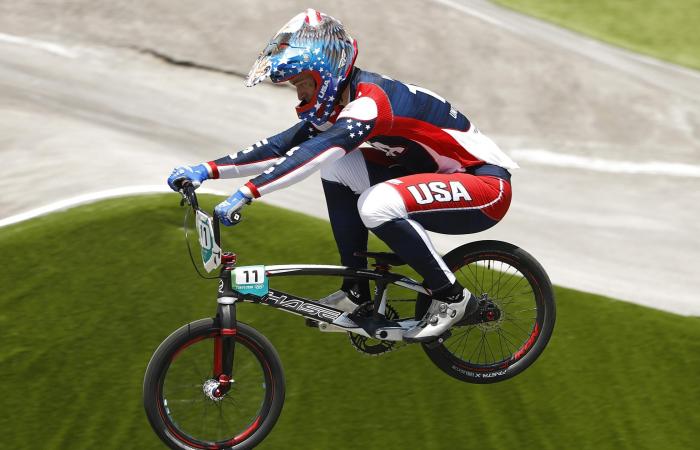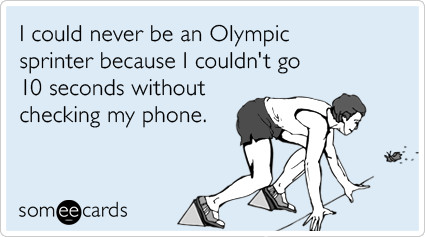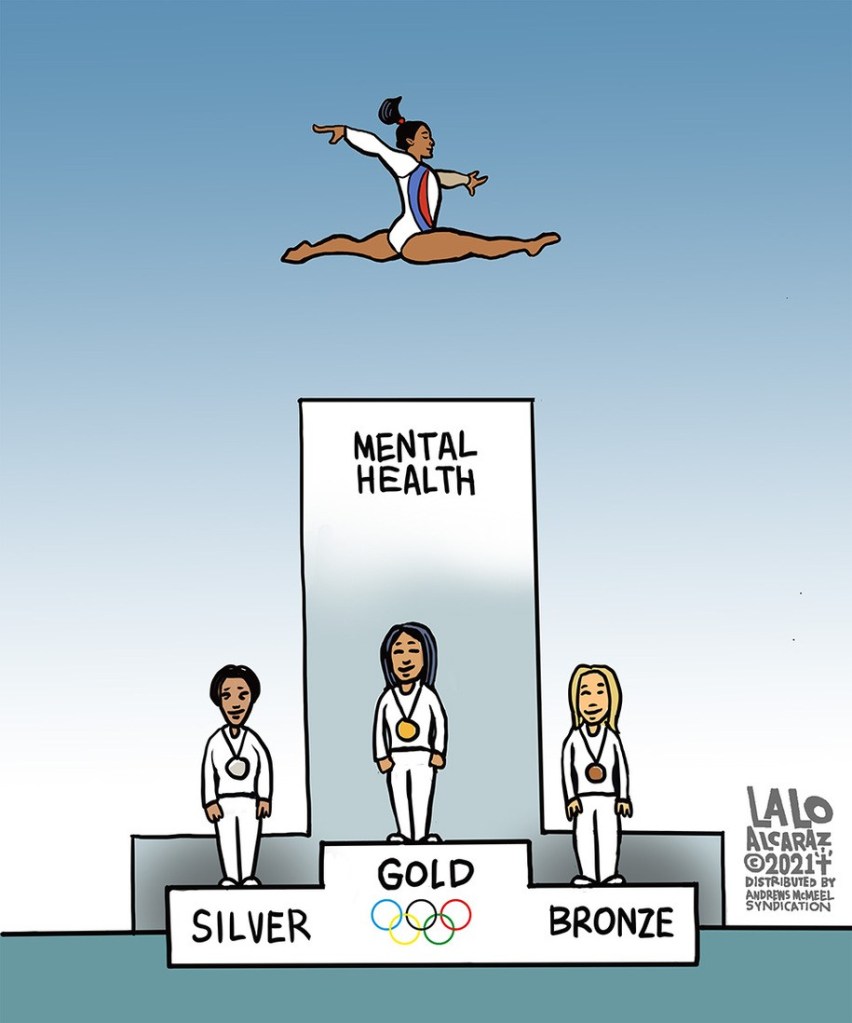Normally I have a lot to say about, well… everything. Actually, not really. There are some topics I’m smart enough not to voice an opinion on.
One of them is whether an elite athlete should get up on an international Olympic stage before billions of viewers and literally risk his or her life for our collective amusements.
After four-time Olympic gold medalist Simone Biles decided last week she was mentally and therefore physically unable to perform her routines at the Tokyo Olympics there have been numerous athletes who have been injured in the line of what too many of us in, their public, instinctively consider their duty.
But perhaps none of them so seriously as the 28-year-old men’s BMX racer Connor Fields. He suffered a brain hemorrhage after a bad crash Friday night. As of this writing he is out of intensive care and the bleeding in his brain has stopped.
Right now Connor seems to be okay cognitively because he knows where is, remembers his birthday and can recognize people, according to his dad. But as a person who endured many, many, many months of miserable headaches and other life-altering symptoms after a mere concussion more than 20 years ago, I can tell you it’s way too soon to determine any long-term effects.
Oh, he’s also got a broken rib and a bruised lung.
Like Simone, Connor had already won a gold medal in his sport at the last Olympics. Unlike Simone, he suffered no disorientation this time doing any of his moves prior to his event.
What happened to him was that during his race the front wheel of his bike clipped the bike in front of him, causing him to tumble forward on his head going around a turn.
This then caused him to be bashed repeatedly by the pack of speeding bikers directly behind him.
Now there is no reading anyone’s minds, especially athletes who are not satisfied with winning merely one or more gold medals in their sports and decide to come back four years later (Note: Okay, due to the covid pandemic, it’s five years this time) to challenge themselves all over again.
But I’d like to think had Connor found himself to be consistently off-balance and disoriented in practice prior to his race, in essence unable to judge the distance between himself and anything beside, beneath or in front of him, there’s a good chance he just might have chosen to sit Friday night’s fateful race out and at least saved himself the hemorrhage.
On the other hand, there is no way to know for sure.
Nevertheless, one hopes so.
It’s one thing to risk a brain bleed as part of your sport when you’re in pique shape. It’s an entirely different matter altogether when your judgment is so far off that even a simple beginners move in practice puts you severely off balance.
Not only are you risking your own life if you choose to compete, you are potentially endangering those around you, the reputation of your sport and the potential Olympic outcome of the rest of your hard-training (Note: FIVE years) teammates.
As Stephen Sondheim and George Furth wisely told us in one of my favorite Broadway musicals, Merrily We Roll Along, sometimes talent is knowing when to get off the stage.
It actually takes a great champion like 24-year-old Simone to not only instinctually know this but to execute the correct move of BOWING OUT in front of the ENTIRE WORLD.
Despite what the armchair, nay-saying couch potatoes are tweeting, that’s actually the move with the highest degree of difficulty.
Though her struggle with the serious gymnastic malady called the twisties is well known and historically documented, and has plagued many a gymnast through the decades, few if any athletes have publicly owned up to it until this Olympics.
When they don’t go on it’s instead usually attributed to something the public can more easily understand – like a persistent virus, a strained muscle or a severely pulled something or other.
Though even a third degree lateral sprained ankle that made it impossible for her to walk normally (Note: And at minimum requires 8 to 12 months of recovery), plus two torn ligaments, didn’t prevent Team USA’s 17-year-old phenom gymnast, Kerri Strug, from continuing her routine in 1996.
In fact, she agreed to get back out there after she was pretty much ordered in front of the whole world to get back out there and perform a second vault by her renowned tough love coach, Bela Karolyi, in order to win the gold for her team.
Which she did at the time.
Never mind that coach Bela had to physically carry her onto the Olympic podium to accept her medal hours later because she was unable to walk at all.
Still, the accolades and support for that sequence of events was overwhelming and deafening at the time. Strug wound up on the cover of Sports Illustrated, on the cover of a box of Wheaties and internationally covered when she visited then Pres. Bill Clinton at the White House.
But if you now look at the footage of this 17-year-old girl being goaded to run and jump on a maimed limb after she sheepishly approaches her coach and asks, do we need this?,it today plays as nothing less than cringe worthy and toxic. Or worse.
(Note: For the record, Bela’s exact reply to her was: Kerri, we need you to go one more time. We need you one more time for the gold. You can do it, you better do it.).
It also tells you everything you need to know about what these young athletes are subjected to by some of the very coaches and systems that are supposed to protect them.
Three decades later, it has taken a multiple gold medal Olympian to begin to turn the tide on all of this. Interestingly, this Olympian is also a young woman of color who is one of a large group of sexual abuse survivors who suffered under the care of former Team USA gymnastics doctor Larry Nasser. That guy now sits in prison under a 60-year sentence for sexual abuse crimes after decades of atrocities covered up and/or not taken seriously by the power structure of Olympic level sports.
Challenging that power structure is no small thing for any athlete, especially a 4’8” Black woman. Yet it’s not only the gatekeepers of her sport in her way.
It’s the hubris of every single armchair critic that has tweeted, written, commentated and podcasted against a pro making a decision not to risk their life for the entertainment of those who salivate for the drama of a more modern version of Roman Coliseum style blood sports.
One imagines these very same critics would likely send out real live lions onto the various arena stages in Tokyo if only we’d let them. No doubt they’d see it as an Olympic sized insurrection to the soft, woke, left wing entertainments now being broadcast across the globe.
These same people can’t see Simone Biles’ actions at this Olympics for what they truly are – a sports changing, life changing, giant Olympic step forward from the dark ages of ignorance they’d prefer to keep us in this and so many other areas.
Guess I did have an opinion on this subject, after all.








